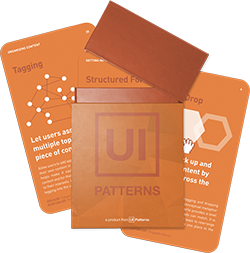Playthrough
Design Pattern
Alternate titles: Interactive Tutorial, Warm-Up Exercise.
Problem summary
The user wants to know how to use the different features of the application.
Example

▲ When signing up for a new Tumblr blog, your account is populated with content so that you can start exploring all the details. As you are browsing around, the interface is explained with inline help boxes.
Usage
- Use when you want to introduce the core interactions of your product before letting them enter the full product
- Use when you want to let users learn and explore the core skills needed to use the product
- Use when you want to allow modeless assistance
- Use when you want to allow users to get out into the full product world without facing horrible failure if they hadn’t gone through this
- Use when you want to let users learn by doing
- Use when you want to create a risk-free space for users to build skills and earn starting achievements
- Use when you want users to develop a set of core competencies that help users transition to advanced actions
- Use when you want to provide a positive first impression through giving a person an early success
- Do not use when there is a chance that users will feel that you are providing too much instruction or hand-holding. At least make it possible to skip.
This card is part of the UI Patterns printed card deck
A collection of 60 User Interface design patterns, presented in a manner easily referenced and used as a brainstorming tool.
Get your deck!Solution
A dedicated and authentic space where beginners can safely explore and learn core skills.
Spare users from facing horrible failure by introducing them to core interactions. Let users learn and explore core skills before they enter the full product experience. Provide modeless text assistance and basic goals so they can play the interface but also learn the interface as they play.
A Playthrough is something that you provide, before letting someone enter a full product experience, that introduces them to the core interactions and let’s them learn and explore those core skills. This pattern is known from games, where new players are encouraged to try out a starter level, where they get modeless text assistance and some basic goals, so that they can play the game, but also learn the game, as they play.
Let users learn through real tasks
By asking users to make their first move on the application, an application can get users engaged right off the bat. This is common in applications that depend on curation by the user to get the app working.
Continue the experience seamlessly into the full product
Carry any achievements earned in the Playthrough forward into the full, and normal, product experience. Make the transition from the Playthrough to the normal product experience as seamless as possible.
Provide a skip option
Some people just want to get into deep waters form the start. Always allow escaping a Playthrough by skipping it.
Don’t drag it out
Limit the playthrough to relevant core tasks and user test your way into finding out what length is comfortable for users. Some users might like longer playthroughs than others, so be sure to allow escaping the experience, but still letting users keep their achieved artifacts.
Rationale
By allowing users to get out into the full product world early and safely, you can keep users from facing horrible failure if they hadn’t had an introduction.
More examples of the Playthrough pattern See all 3 example screenshots


User Interface Design Patterns
- Forms
- Explaining the process
- Community driven
- Tabs
- Jumping in hierarchy
- Menus
- Content
- Gestures
- Tables
- Formatting data
- Images
- Search
- Reputation
- Social interactions
- Shopping
- Increasing frequency
- Guidance
- Registration
Persuasive Design Patterns
- Loss Aversion
- Other cognitive biases
- Scarcity
- Gameplay design
- Fundamentals of rewards
- Gameplay rewards


